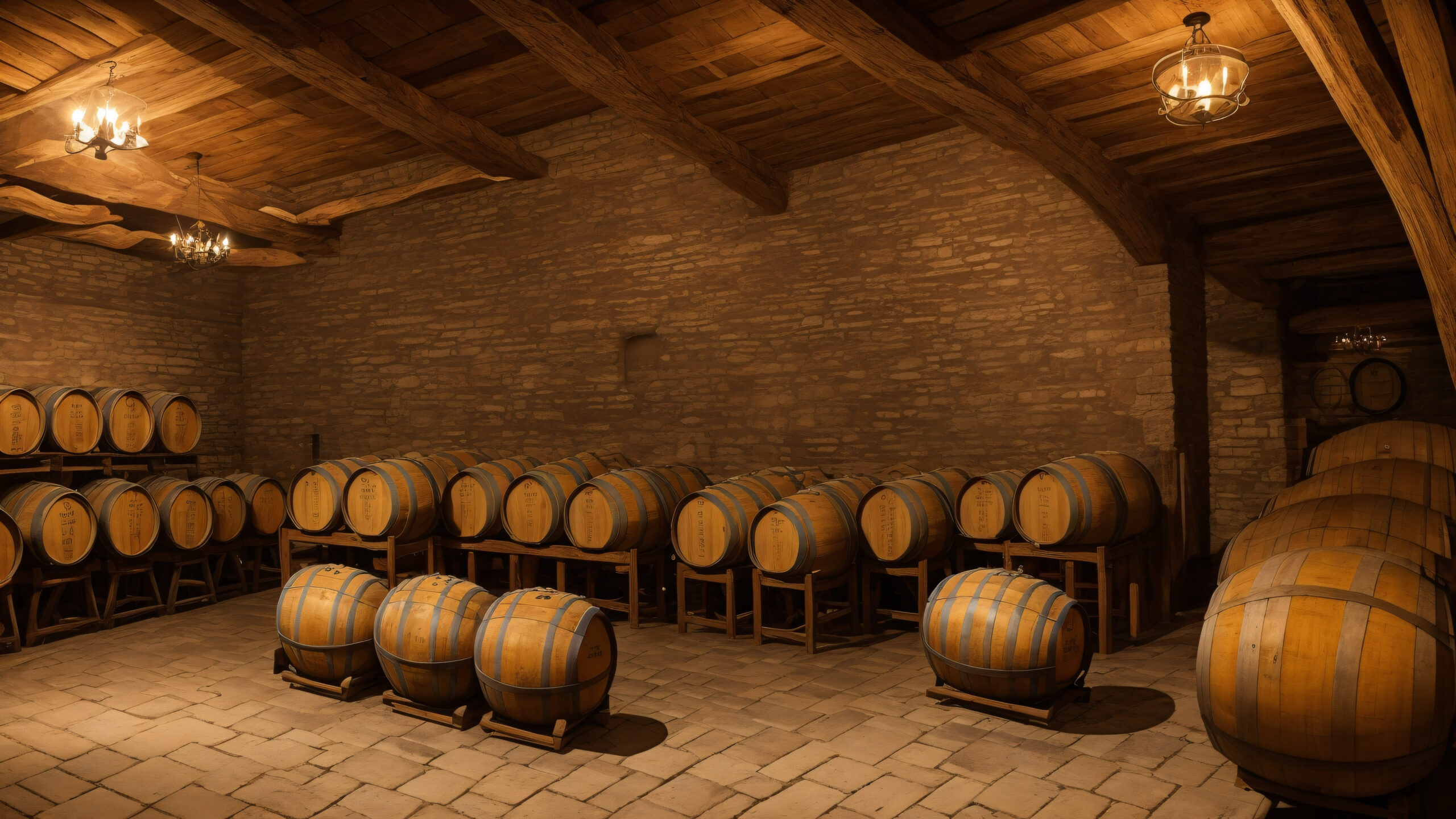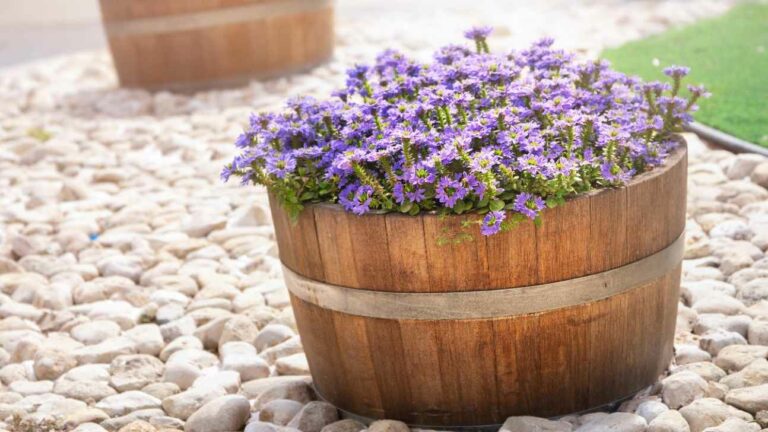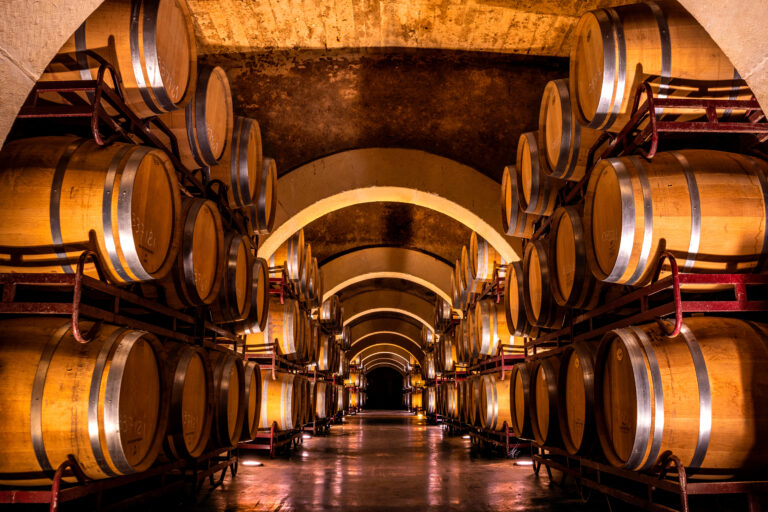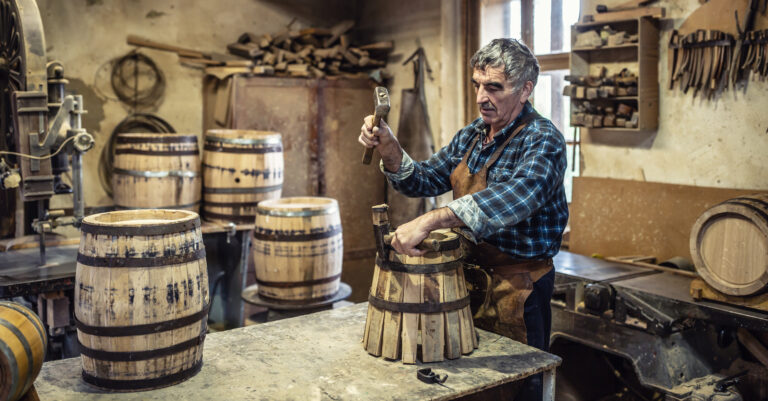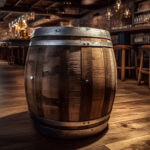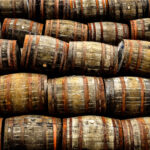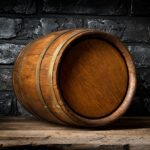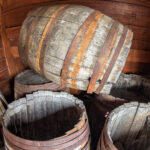Ever been sipping your favorite whiskey and thought, “Wait a minute… these barrels are made of wood, right? What happens if they get wet?” I know I have! It’s a common question for whiskey lovers. After all, we see those romantic images of rickhouses stacked high with barrels, and it’s hard not to imagine a leaky roof or a sudden downpour causing havoc.
But relax, your precious whiskey is safe. Barrels are tougher than they look, and distilleries have their methods for keeping things dry and delicious. Still, it’s natural to be curious about the aging process. So, let’s explore what really happens when whiskey barrels encounter water and how those master distillers ensure our favorite drams stay top-notch. By the time you finish reading, you’ll be the whiskey barrel expert in your friend group.
Introduction: The Age-Old Question
Okay, let’s get right to it: can whiskey barrels get wet? Like, if they’re chilling outside, will a little rain ruin everything? The short answer is: it’s complicated.
You see, whiskey barrels are typically made of oak – usually American white oak or European oak. Now, oak is naturally pretty water-resistant, but if it’s soaking wet for ages, it can start to swell up, warp, and even rot. Not good for the barrel, not good for the whiskey.
But here’s the thing: whiskey barrels are charred on the inside. That charring creates a kind of protective layer that helps keep moisture from seeping too deep into the wood. So, a little rain shower or some humidity? No big deal. A full-on soaking? Yeah, that’s where we run into problems.
Ideally, barrels should be stored on their sides in a nice, dry place, like a warehouse. This keeps them safe from the elements and lets the whiskey age the way it should. Now, some distilleries do age their barrels outdoors, but they keep a close eye on them and bring them inside if things get too wild with the weather.
Generally, if you’re aging your own whiskey (lucky you!), it’s best to keep those barrels indoors where you can control the environment. Think of it like this: oak barrels are tough, but they’re not invincible. A little care goes a long way!
What Exactly Are Whiskey Barrels Made Of?
We already know whiskey barrels are usually made of oak, but there’s more to it than that! Oak is the go-to because it has this amazing ability to let the whiskey “breathe” while still holding it all together.
The wood for these barrels is carefully chosen and goes through a whole “curing” process before it’s even made into a barrel. Then, the inside gets charred (remember that protective layer we talked about?). This charring isn’t just for protection; it also adds a ton of flavor and color to the whiskey.
And here’s a fun fact: brand new barrels aren’t used for aging whiskey right away. They’re “seasoned” first by holding other spirits like bourbon or sherry. This preps the wood and prevents the whiskey from getting overwhelmed by oaky flavors.
The size of the barrel, the type of oak, how much it’s been charred, and whether it’s been used before all play a huge role in the final taste of the whiskey. Over time, the whiskey soaks into the wood, picking up all sorts of amazing flavors. Honestly, the barrel is like a magic ingredient!
Why Dry Barrels Are Happy Barrels
Keeping your whiskey barrels dry is like rule number one for any whiskey maker. Why? Because a dry barrel means happy whiskey!
A Tight Seal is a Whiskey’s Best Friend
Remember how barrels are made of wood? Well, if water sneaks in, it can mess with the wood and ruin the whiskey. As the whiskey ages, it soaks into the wood, picking up all those lovely flavors and colors. But if the wood is wet, you can end up with some pretty funky tastes in your whiskey. So, making sure those barrels are sealed tight is super important.
The Right Environment is Key
A good seal is only half the battle. You also need to store those barrels in a dry spot. Too much humidity can cause all sorts of problems, like mold and rot. The ideal situation is a climate-controlled room with just the right amount of moisture in the air. No damp basements or drafty garages!
Keep an Eye on Things
Just like you’d check on a prized plant, it’s a good idea to regularly inspect your barrels. Look for any leaks, cracks, or anything that seems off. A little inspection can prevent a big headache down the road.
Does Moisture Ever Get In?
Okay, so we know we need to keep those barrels dry, but here’s the truth: it’s almost impossible to keep all moisture out.
Barrels Like to Breathe
Those barrels are stored in warehouses, and warehouses aren’t exactly airtight. The temperature and humidity change with the weather, and the wood of the barrel expands and contracts. This means that tiny amounts of moisture can sneak in. But it’s not necessarily a bad thing!
Think of it like the barrel is breathing. It takes in a little moisture, lets some out, and this actually helps the whiskey mature and develop its flavor.
The Angel’s Share
You might have heard of the “angel’s share.” It’s the whiskey that evaporates from the barrel during aging. Sounds sad, but it’s actually part of the process. As the whiskey evaporates, the flavors become more concentrated.
Moisture and Flavor: A Love Story
Believe it or not, that tiny bit of moisture that gets into the barrel actually helps the whiskey interact with the wood. It helps those amazing flavors from the wood get into the whiskey, creating all those notes of vanilla, caramel, and spice that we love.
So, a little moisture? It’s a good thing! Too much moisture for too long? That’s when we have problems.
A Little Water Can Fix a Leaky Barrel
Here’s a cool trick: if your barrel springs a leak, a little water can actually help fix it! The water makes the wood swell up, closing those gaps.
Empty the barrel, give it a good rinse, and let it dry completely. Then, fill it about a quarter full with water and seal up any cracks or holes. Over a few days, the water will soak into the wood and (hopefully) seal those leaks right up!
Once the leaking stops, drain the water and let the barrel dry out again. This method works wonders for small cracks and leaks. For bigger problems, you might need a more serious repair, but it’s definitely worth a try!
Keeping Barrels Safe in Damp Conditions
Moving whiskey barrels around, especially when they’re damp, can be a bit risky. Here are some tips to keep those barrels safe:
- Lift from the bottom: Don’t grab the sides – they’re more likely to warp when wet.
- Let them dry before stacking: Stacking wet barrels is a recipe for disaster.
- Use a barrel cart: Makes moving them a breeze, especially over uneven ground.
- Cover them up: If they’re traveling in an open truck, protect them from the rain.
- Store them in a dry place: No damp corners or flood zones!
- Regular checkups: Keep an eye out for any leaks or damage.
Giving Old Barrels a New Life
You might be surprised to learn that whiskey barrels don’t just get used once. In fact, they can be re-charred and used again and again!
Why Re-Char?
Over time, that charred layer inside the barrel starts to break down. This means the whiskey gets less flavor from the wood. Re-charring the barrel is like giving it a fresh start.
How Does it Work?
It’s actually pretty simple. You empty the barrel, clean it out, and then light a fire inside to char the wood again. This exposes fresh wood and gives the barrel a whole new life.
FAQ: Can Whiskey Barrels Get Wet?
Alright, let’s recap. Yes, whiskey barrels can get wet, but it’s all about moderation. Distillers go to great lengths to keep things dry because too much moisture can spell trouble.
During Aging: Barrels are stored in climate-controlled warehouses, and they’re stacked on their sides to keep water out.
During Transport: Distillers try to avoid bad weather, and they keep barrels covered whenever possible.
Reusing Barrels: Before a barrel gets used again, it’s carefully inspected, dried, and re-sealed.
What Happens if Things Get Too Wet?
If a barrel gets soaked, the whiskey inside can suffer. The flavor might become dull, the color might fade, and you might even get some unpleasant tastes. That’s why distillers are so careful to monitor their barrels and take action if they spot any problems.
Final Thoughts
So, there you have it! Whiskey barrels can handle a little moisture, but keeping them dry is essential for making great whiskey. It’s a delicate balance, but the result is a spirit with depth, complexity, and a whole lot of character. Next time you enjoy a glass of whiskey, take a moment to appreciate the journey it took – and the barrel that helped it get there!
